In Zelda II: The Adventure of Link, a villager famously states:
I AM ERROR.
And that’s it. That’s all he says.
This particular line is considered one of the biggest mistranslations in an early Nintendo game… but it’s not actually a mistranslation at all. He really, genuinely says the same thing in the Japanese version:
 | 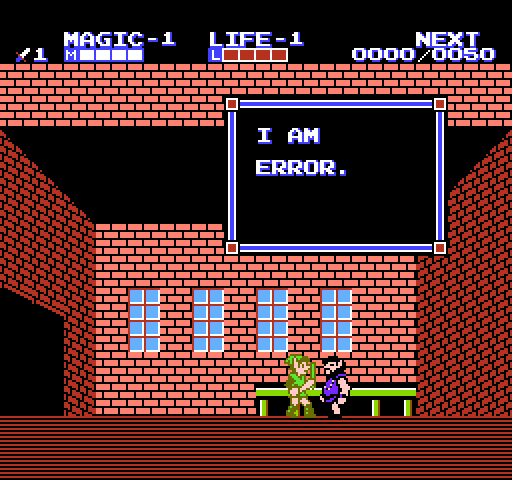 |
| Zelda II (Famicom Disk System) | Zelda II (NES) |
| Japanese text | Basic translation | Official translation |
| オレノナハ エラー ダ… | My name is Error… | I AM ERROR. |
I guess if they had translated it as “MY NAME IS ERROR.” it might have sounded less like a mistake. But however you look at it, it is a pretty weird line in any language. But wait – we’re not done yet!
Later in the game, the player encounters a hermit living in seclusion. In English, he says:
Bagu is my name. Show my note to river man.
 | 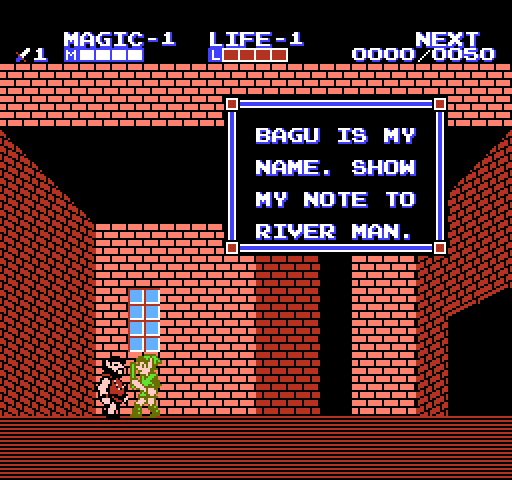 |
| Zelda II (Famicom Disk System) | Zelda II (NES) |
| Japanese text | Literal translation | Official translation |
| オレノナハ バグ ダ | My name is Bug. | BAGU IS MY NAME. |
| ワタシバノ オトコ二 コノテガミヲ ミセロ | Show this letter to the man at the river passing. | SHOW MY NOTE TO RIVER MAN. |
We see here that in Japanese his name is actually “Bug”, as in a “computer bug”.
Basically, the designers decided to call one guy “Error” and one guy “Bug”, but that thematic connection was lost in the translation.
The mistake came about because “bug” is phonetically written in Japanese as bagu, but apparently the translator didn’t pick up on the intended thematic connection and left it as bagu.
Anyway, so that solves that mystery. The next mystery is, “Why did they call these characters these names?” But I don’t even know how to go about getting answers to that. Have any of the game’s staff members commented on it before? If so, let me know.
Incidentally, this very same Bug and Error thing also appeared in another Nintendo game – MOTHER for the Japanese Famicom and EarthBound Beginnings NES game.:
 |  |
| MOTHER (Famicom) | Earth Bound (NES) |
The mystery of Error and Bug continues…


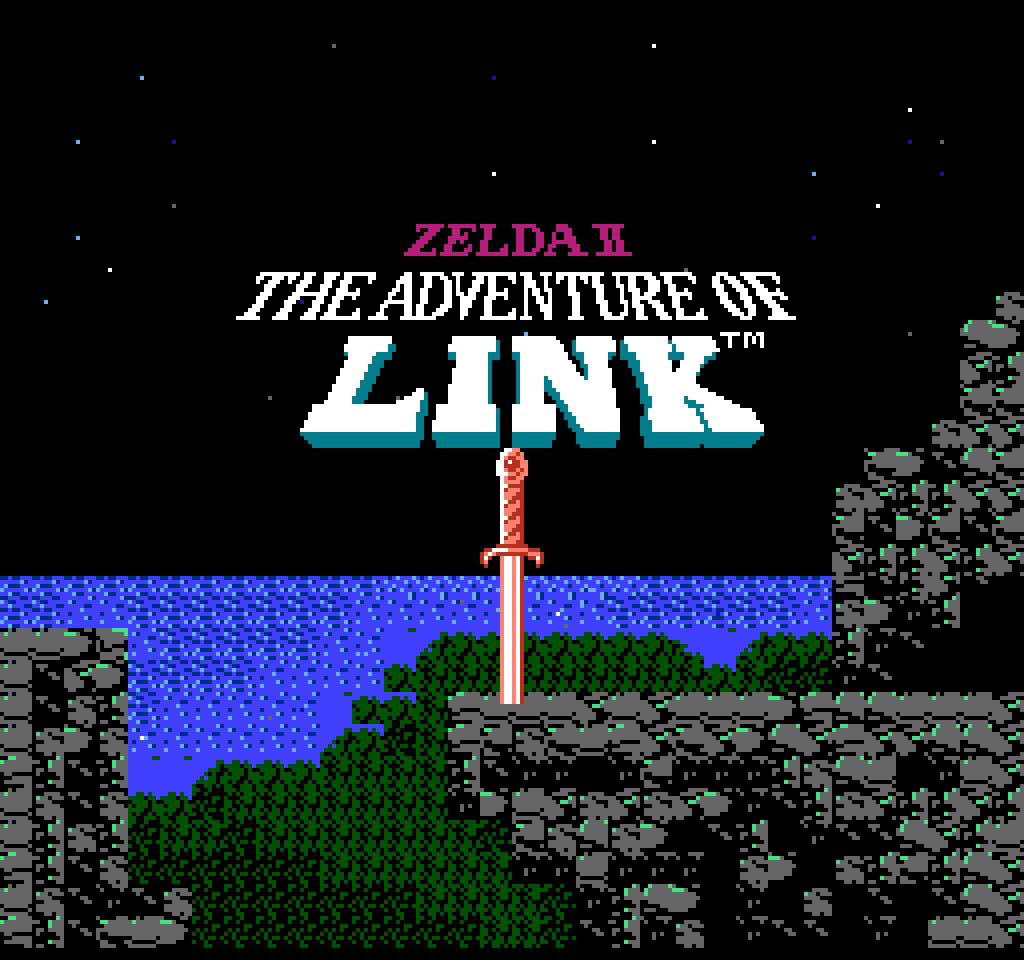
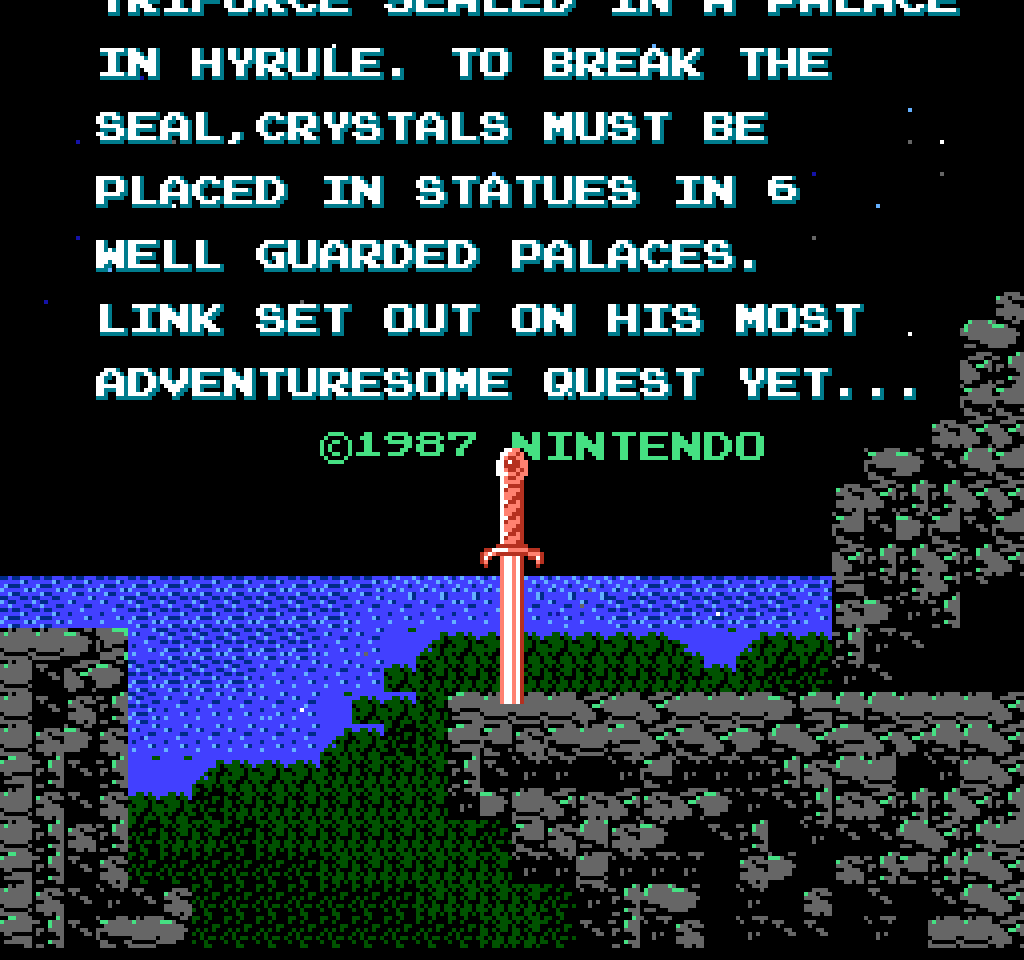
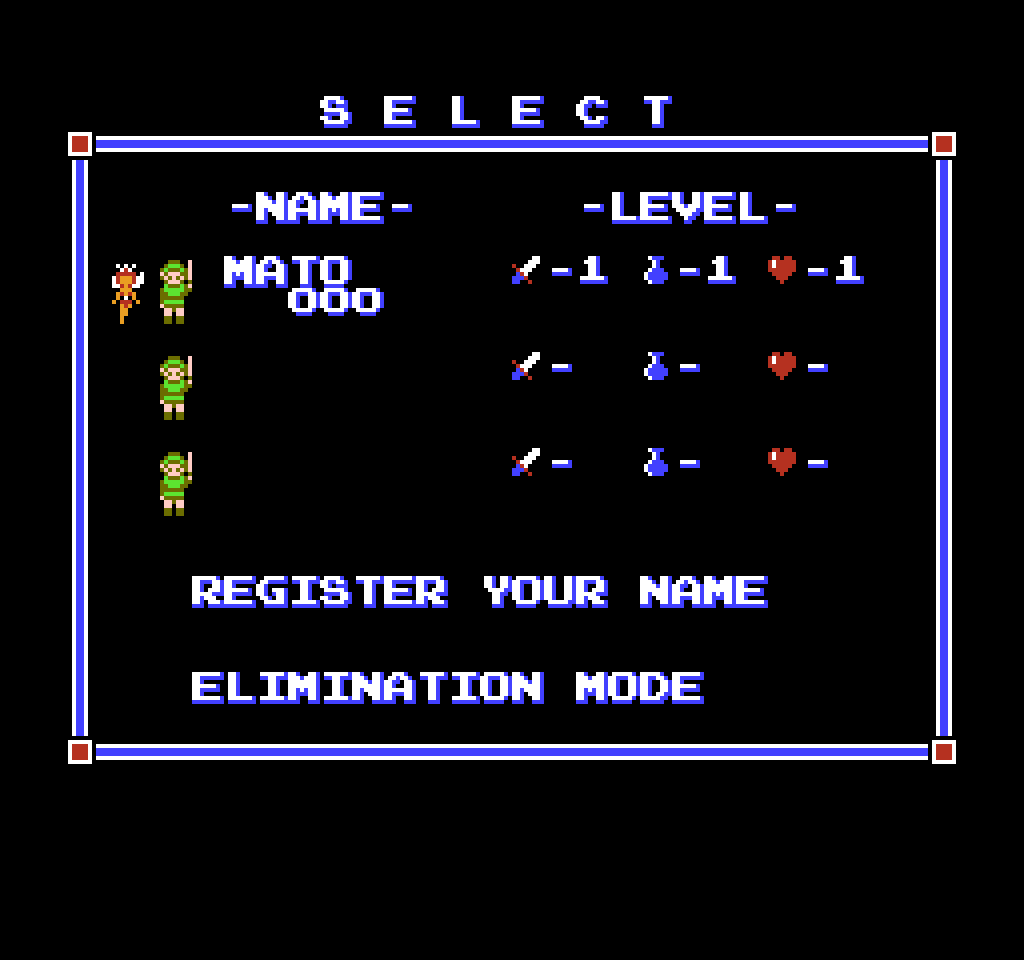
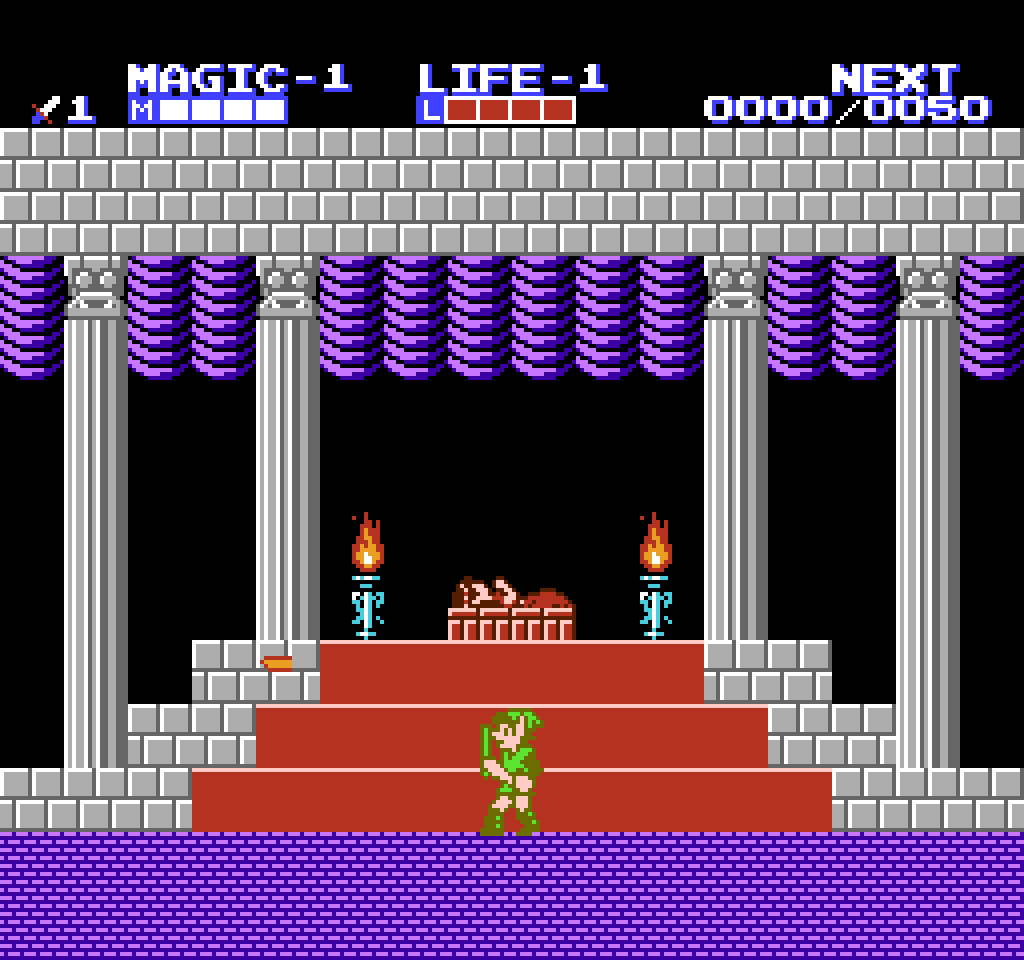
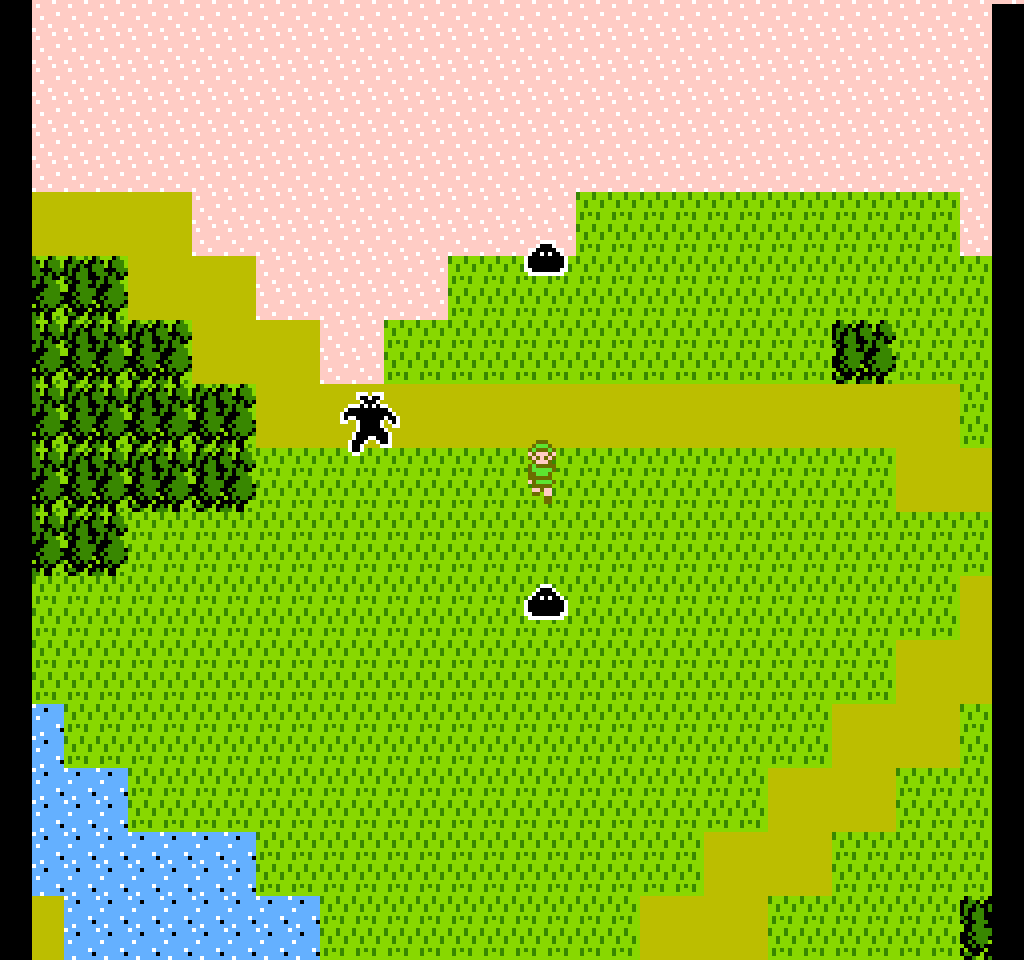

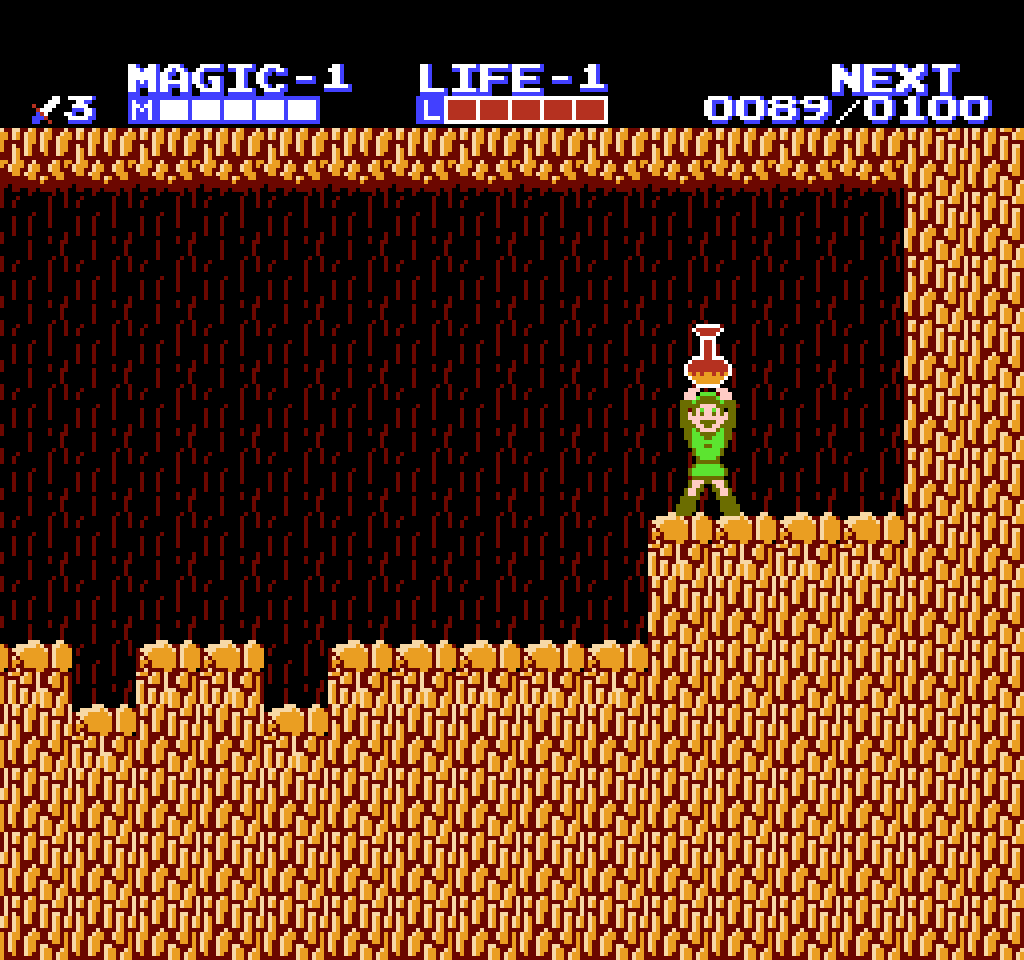
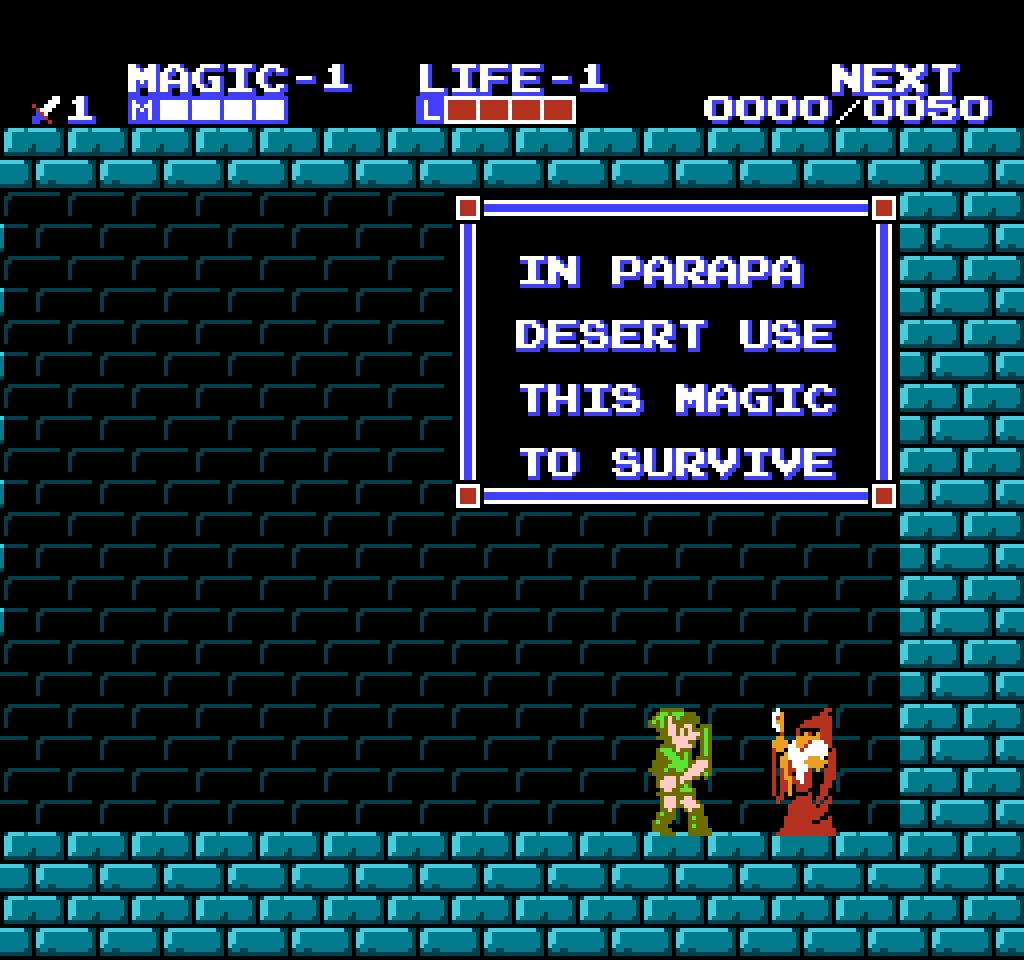

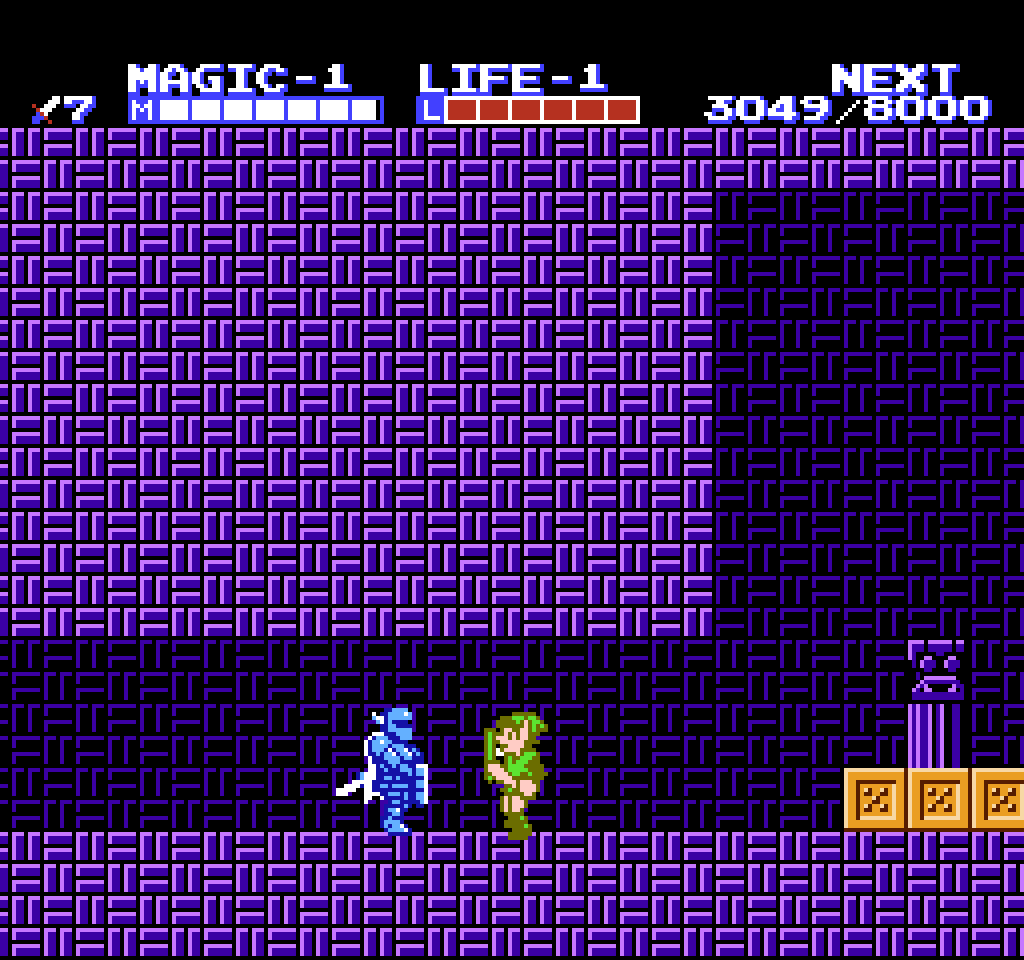

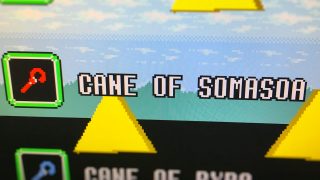
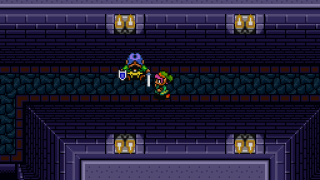
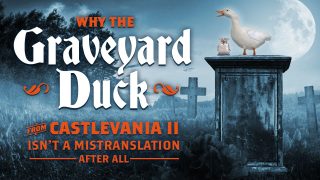
Is there any reason they are talking in katakana?
I believe that’s just how things in old games were written, for whatever reason. Maybe because the more angular katakana are easier to make legible with 8×8 pixels? That’s purely speculative on my part, though.
I’m not 100% sure myself, but it was that way with the first Japanese Zelda game too, as I point out here.
I briefly looked into trying to translate StarTropics into Japanese a little while back and it looks like VRAM was pretty limited and it’d be hard to put two kana sets in there, so maybe the Zelda games were designed in a similar way. It seems pretty weird that other Famicom games could handle multiple characters sets just fine though.
That’s neat about translating StarTropics into Japanese! Has anyone actually done it? How is the game regarded over there among the hardcore fanbase?
I’ve done searches every once in a while but it seems to be pretty much unknown. I get the feeling someone probably hacked it at some point, but Japanese hackers tend to be more reclusive than our counterparts, so finding Japanese patches and hacks and stuff is harder.
The NES allows for 256 (2^8, coded on 8-bit) simultaneous background tiles. It is possible to fit it with both Kanas + numbers + some latin letters, as FF1-3 does, but then it’ll take more than half of the available tiles ! The remaining baground graphics had then to be designed with very severe restrictions.
It is understandable that Zelda games went the route to use only a single Kana set, and to have more tile available for actual graphics.
Isn’t there something about katakana being used in manga and stuff to denote somebody having a robotic type of voice? If they are called BUG and ERROR, it would make sense to give them that type of voice, right? Or am I remembering something wrong?
Yes, that’s true, but everyone and everything in the game speaks in katakana, not just these two characters.
Well, shot that theory in the foot.
The main reason why those old games used Katakana instead of Hiragana was for simple readability. 8×8 Hiragana tends to be kind of messy and takes longer to read than 8×8 Katakana does; Hiragana characters are generally very curved and does not translate well to pixels, while Katakana is very angular and easy to convert into even a low-resolution font.
Also, Katakana-only instead of Hiragana-only leads to less confusion with loanwords, of which Japanese has many. Seeing something that’s normally written in Hiragana suddenly in Katakana is far less confusing than the other way around, and probably the main reason why you rarely (if ever) see any character “speaking” solely in Hiragana in any Japanese written media.
I disagree. As somebody who has studied Japanese only a few years, I cannot read hiragana quickly at all. Weird fonts (like the Mr. Saturn font) can easily confound my comprehension and slow me down even further. Yet I find 8×8 hiragana perfectly legible and can read it as fast as anything else. So I think video memory limitations had much, much more to do with it than readability.
I agree that it’s much weirder to see a katakana word in hiragana than vice versa, though, so if you have to pick only one of the two writing systems, katakana is the logical choice. Some games did opt for all hiragana, though, such as Downtown Nekketsu Monogatari (River City Ransom).
Check out the Famicom version of Maniac Mansion in Japanese. All hiragana. So weird.
Mato, I’ve got a question. Back when Smash Bros. Dojo was seeing regular updates during Brawl’s development, Masahiro Sakurai posted an update for Kirby’s Final Smash. The English version seems to have nothing out of the ordinary, but the Japanese version had an extra bit involving the “Shaberu! DS Cooking Navi” song (based on a game that was eventually localized as Personal Trainer: Cooking, followed up with America’s Test Kitchen — which had nothing to do with the show, and I’m not entirely sure if the recipes are the same or different from Personal Trainer: Cooking). The song is still in the localized versions of Brawl, so there’s no excuse for its absence in the translated version of the Dojo. So what was Sakurai saying about the song?
I found this review of the ATK software for Nintendo DS. It turns out it’s Personal Trainer: Cooking, with entirely American recipes direct from the show’s staff.
Apparently the voice in the beginning of the track says “let’s have a brawl/dairantō”, and it was arranged by the original game’s composer.
I wasn’t interested in what the song is saying, I’m interested in the part of Sakurai’s commentary that wasn’t translated for the non-Japanese versions of the Dojo.
I think that’s what he said.
BAGU showed up later, too, though only as a debug-enabling name A Link to the Past (as “BAGE”, technically…)
Seems they were fond of their bugs.
I’m surprised you didn’t mention Buggerror Rosemary (バグエラー・ローズマリー) from Mother.
Haha, yeah, I actually forgot about it at the time I wrote this.
Well isn’t it a possibility of just the “writer” naming the NPC off a certain theme? Like Akira Toriyama and theming his characters names to vegetables and musical instruments.
But it certainly led to bizarre translations though.
I’m pretty sure it’s supposed to be “Errol” as in Errol Flynn, but the spelling got botched (though whether it was intentional or accidental isn’t clear).
It’s ‘Error’. The Japanese is not ‘eroru’ but ‘eraa’; that can only be ‘error’. Besides, as pointed out in the article, there’s someone else named Bug.
I recently watched a YouTube video about the “I AM ERROR” message, which sparked my curiosity on the subject. I decided to play the Japanese version of Zelda II to check out the meaning for myself, and I was surprised to see just how straightforward the Japanese text is! I wonder, then, why the English text is so cryptic in comparison. This curiosity then lead me to Google, and ultimately here.
I can understand how 「バグ」 flew over the translators’ heads (they missed the computer joke context), but screwing up 「オレノナハエラーダ」 seems totally amateur.
By the way, this is a fantastic Web site! I will no doubt spend hours reading up on translation quirks here. Maybe some of these articles will encourage me to play the Japanese versions for myself. 🙂
They didn’t screw it up, though, “I AM ERROR” is a perfectly legitimate translation of オレノナハエラーダ. Had the guy been named Bob and said “I AM BOB”, nobody would be acting like this was some sort of mistranslation.
The lumberjack named Error in Zelda II does have a purpose (other than stating his name). There is a lad in Harbor Town of Mido who says “ASK ERROR OF RUTO ABOUT THE PALACE”. After talking to this guy, go back to Ruto and talk to Error again. He will reveal that there is a secret passage south of the king’s tomb.